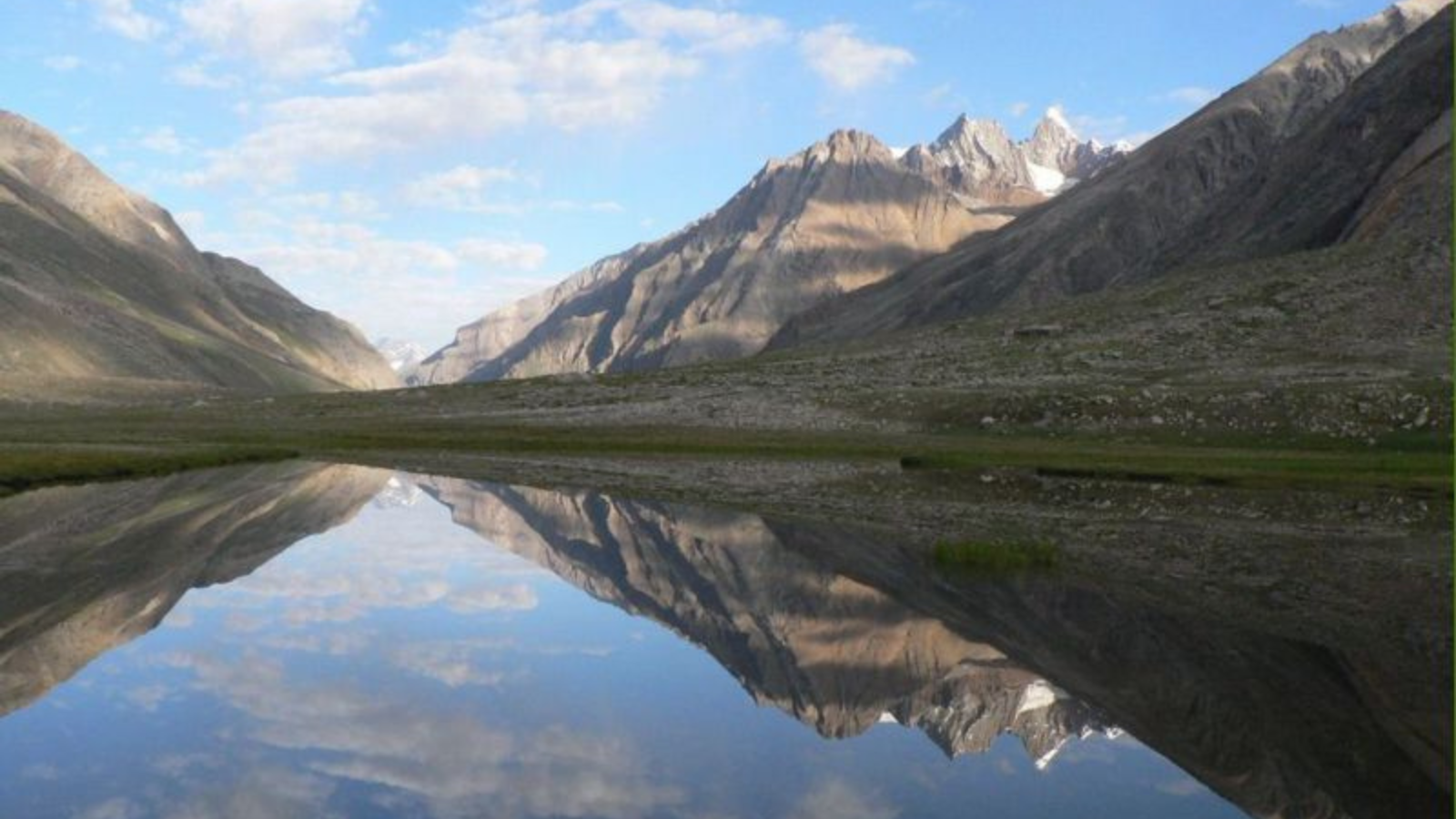“I live right next to the Indus. Every year we see hundreds and hundreds of black kites that are coming here in the spring and then again in the autumn for a few days. Some of the willow trees that we have next to the river turn black because there’s so many of them [kites]. So that’s a sign how important Indus is for these migratory birds. And then they go further up northwards in the spring and then go down crossing the Himalayas in the fall. We have documented these epic journeys—how some of these birds are using these wetlands as they cross the mountain ranges using some low points—passes which are used by humans. Passes are used by the migratory birds because the Himalayan peaks are too high for them to fly over.... It’s because of these wetlands that these birds are able to take on these epic journeys year after year.”
— Tsewang Namgail.
A conversation with Tsewang Namgail, Director, Snow Leopard Conservancy India Trust, Leh, Ladakh, Union Territory of Ladakh, India; Madhumita Dutta, The Ohio State University; and Parineeta Dandekar, South Asia Network on Dams, Rivers & People. Photo caption: A wetland along the Suru River, a tributary of the Indus in western Ladakh.
Madhumita Dutta (MD) and Parineeta Dandekar (PD): Tell us a little bit about yourself, how did you start working on wildlife, birds, rivers, and glaciers.
Tsewang Namgail (TN): So my entry into all of these is, of course, through wildlife and wildlife conservation. I don’t know how far back you want me to go...it will be a long and winding story. But okay. I got interested long, long ago as a kid in the village, basically in a very rural setup, going out in the mountains and to the rivers. I really got a lot of opportunities to interact with nature and—be it wildlife or just the natural environment—going to all the places, collecting wild vegetables from the mountains, and all of that. That’s how I got started.”
MD: Where did you grow up? Can you give us a sense of the place?
TN: It’s in the western part of Ladakh, a small village called Skurbuchan, which is some 120 kilometers from Leh. I had a very unusual childhood experience. I used to herd sheep and goats on the weekends and go to school on the weekdays. That really put me in close contact with nature in many ways. And once I got an opportunity, I came out of the village after my 10th standard. In the village, teachers from the plains, mostly from Kashmir and Jammu would come to teach for three or four months, and then they would go away for months without any intimation. That gave me and my friends a lot of time to just go around and do our stuff, interact with nature. That’s my rural experience growing up in the village, really be out there in nature, just experiencing raw nature. Like, you know, all the seasons used to be so distinct in terms of all the activities that we children would get involved in. Once I came out of the village after my 10th standard, I slowly got attracted to wild animals and took zoology as a subject for my bachelor’s degree. And after that I went to Punjab University to study zoology, and had entomology as a major. Thereafter, I got an opportunity to go to the University of Tromsø in Norway. And there I studied wildlife biology, and then a PhD in wildlife ecology at the Wageningen University in the Netherlands.
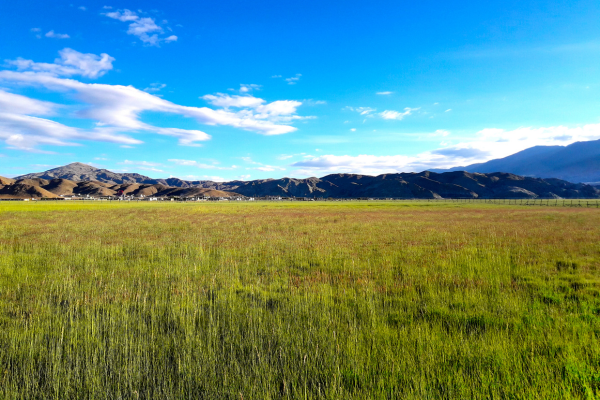
MD: Thanks, this is great. From your childhood, do you have any memories of Indus river? Was your village close to the river?
TN: Definitely. So the very early memories of the Indus was that I would go with my uncle and aunt to fetch sand from the river bank to put in our kitchen garden. We grew onion, and sand is good for growing onions. I would just be mesmerized, looking at the quantity of water flowing. I had a lot of reverence, and also fear of the river because the water body is so big, you know. The water level used to be much higher than what we have today. We used to have these apricot orchards near the banks of the river. Oftentimes I would see these structures in the water—like, the water flowing over a huge boulder, at times, as a kid, I used to be very afraid that maybe it’s a relative of mine—somebody just drowned, and that body is there, and the water is going over that, you know. That sort of things are still very vivid, actually. And in terms of benefit, you know, there is the sand, for instance, I told you about. In terms of water from the river, we won’t get much in our part of Ladakh, you know. The water is not used much for irrigation, or even for drinking, for that matter.
MD: How far was it from your village—the river?”
TN: River was just like, from my home, about half a kilometer—even less than that, actually. And we would just go down. The village is on an alluvial fan. So at the most about 200-300 meters.
MD: So what was the source of water for the village, if it was not from the river?
TN: There is a stream flowing down from the glaciers up in the mountains. We wouldn’t drink from the Indus. The water in the stream used to be much cleaner. During the summer, water in the Indus was very murky and muddy, and people wouldn’t get water from there. But in the winter, many people—my maternal uncle’s family—would get water from the Indus, especially in the winter, you know, when it’s clean. Today, it’s not drinkable, and people don’t drink from the Indus.
I used to hear a lot about these mythical creatures in the river. These creatures, people used to call them—snambu, kaptse. In Ladakhi snambu means pattu, you know, like this woolen strip of cloth in rolls. And so, I wonder if it’s a creature like the eel, long and flat. And kaptse means crocodile in Ladakhi. So people might have seen crocodiles—who knows? I don’t know whether we told you or not, the Indus walk that we had organized the year before with students, we talked to some people living next to the river. Somebody told us that he once saw a crocodile. We have to look at the data. So I don’t know—who knows, maybe—it’s still there. And yostan was another creature that people would talk about. Yostan means round container made of grass, and it’s actually used for drying roasted barley. Maybe this could be a stingray or something, you know, which is circular. So these are the things that people used to tell, and we used to be afraid of them [as children]. But I never saw any myself. Even today, people talk about them. And a few years ago someone who volunteered with us, was interested in finding out more about them. He had heard that there is this village called Domkhar where the water in the Indus is quite deep, and there, the person who has his house next to the river, saw a creature which looked like a sleeping bag. The creature would emerge and then it would disappear immediately. And so it could be a dolphin, who knows.
PD: Just a quick question in connection with the dolphin sighting. What is the biggest, largest fish in that region of Indus?
TN: The largest fish? We have a lot of these snow trouts. However, the biggest fish right now is the rainbow trout, which is an introduced species.
PD: Introduced?
TN: It was brought to Ladakh from Kashmir. Then we have the brown trout, which is slightly smaller than the rainbow trout. These were species introduced by the British, and you might have heard about these species from other Himalayan rivers also.
PD: I was just trying to connect if there’s a possibility of having dolphins [in the upper Indus], a vestigial population of dolphins there at some time.
TN: Who knows? There are some references, no exact dates, probably 200 to 300 years ago, but not in recent times.
PD: So in relation with the question of biodiversity, we have so many headwaters either in the country or on the borderlands of the country, but looking at the very unique geographical and cultural location of Indus, can you share with us your thoughts on how Indus is unique and different in comparison with the other Himalayan rivers that you might have studied?
TN: So culturally and historically, of course, because the Indus valley civilization is so significant that no other Himalayan river really had that sort of a thriving civilization. And so that really sets it apart from all the other Himalayan rivers, I would say. The other significant thing is that most of the other Himalayan rivers flow through large tracts of green areas, with a lot of vegetation and all. This [Indus] is the only river that flows through a very dry landscape, which is Ladakh. And then, of course, once it enters the plains of Pakistan, which is lush with a lot of trees. So that is different about the Indus. And then the Indus—I think in some texts, even Brahmaputra—has a masculine gender. The only thing that comes to my mind as to why these two rivers have a masculine gender, it could be probably because of their vastness and the force with which the water flows, you know. Brahmaputra flows from Mansarovar area as the Tsangpo River, and then it becomes Brahmaputra once it enters India. So, these two [Tsangpo and Indus] rivers are quite significant, flowing across desolate areas, one towards the east and the other towards the west.
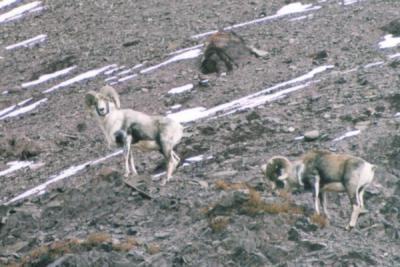
Biodiversity, wildlife-wise, of course, it’s quite unique. The Indus watershed has some very unique wild animals. Given the aridity in Ladakh, a lot of animals are dependent on the Indus for drinking water, be it mammals or the birds. In mammals, we have some very unique mountain sheep and goats, including the Tibetan argali, which is the biggest wild sheep in the world, and the Ladakh urial, which is the smallest wild sheep in the world, and the blue sheep. Then you have the Asiatic ibex, which is a true goat. And all of these animals have their own distinct distributions. Elsewhere, they don’t coexist, but here in Ladakh, along the Indus River—all of these four species come together. Some are coming from the west, and some are coming from the east. So in many ways, the Indus is a kind of an expansion route for many of these species.
For instance, the Ladakh urial, the smallest wild sheep that I told you about, and the Asiatic ibex— are coming from the west, and the Tibetan argali and the blue sheep are coming from the east, and somewhere in the central part of Ladakh, along the Indus, they coexist. It is the only place on the planet where these four species are in co-existence, otherwise they are distributed separately in different regions all the way to Mongolia. So that is quite unique in terms of distribution of these animals.
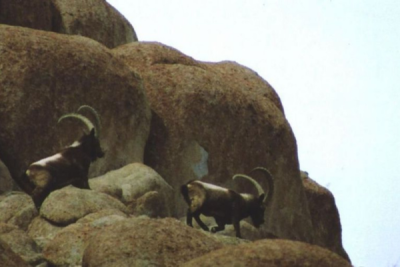
Similarly, in the case of birds, we have two species of snowcock. One is coming from the west, the other is coming from the east, and in the central part of Ladakh, along the Indus, they coexist. The one that is coming from the west is the Himalayan snowcock, and the one that is coming from the east is the Tibetan snowcock. Similarly, in case of partridges—there is a species called Tibetan partridge that is coming from the east, and another one called Chukar partridge coming from the west, coming in contact in the central part of Ladakh. So, Ladakh is really a meeting point for these species.
Furthermore, we have two species of marmots in Ladakh. One is coming from the east, the other one coming from the west. The western one is the long-tailed marmot, and the eastern one is the Himalayan marmot. They overlap in the central part of Ladakh. Similarly there are two species of hare: the Cape hare from the west, and the Tibetan hare from the east.
Then as you go further east, you have the Tibetan gazelle, the Tibetan wild ass, wild yak, and the Tibetan antelope. These animals are adapted to flat terrain; they cannot exist in rugged areas. Tibetan antelope is the only migratory mammal species in the Tibetan Plateau–Himalayan region, actually. It is distributed in the eastern part of Ladakh, where the flat landscape facilitates its migration.
And birds, of course, as I told you –the epic journey of many of the migratory birds across the Himalayas is because of the wetlands created by Himalayan rivers: the Ganga river on the southern side of the Himalayas, and Indus and the Tsangpo Rivers, one flowing towards west, and the other flowing towards east—creating a continuous stretch of wetland on the northern side of the Himalayas. The Himalaya is one of the most formidable barriers for any migratory bird in the world, you know. So they [migratory birds] need all these resting places, these so-called staging sites, where they have to feed for a week to ten days, and replenish their fats and energy before they continue their journey to their final destinations in Central Asia, Siberia, Mongolia, and all these places. And on the southward journey in the autumn, they again come back from those places, and then stay at small patches of greenery along Indus.
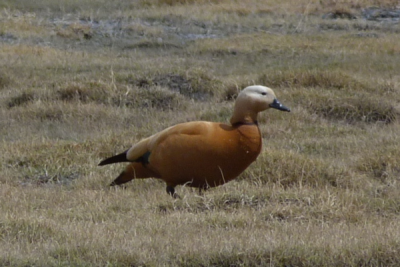
I live right next to the Indus. Every year we see hundreds and hundreds of black kites that are coming here in the spring for a week to ten days, and then again in the autumn for a few days. And some of the willow trees that we have next to the river, turn black because there’s so many of them [kites]. So that’s a sign how important Indus is for these migratory birds. And then they go further up northwards in the spring, and then go down crossing the Himalayas in the fall. It’s really fascinating, I mean, if you look at all these birds, and how they migrate. If you ever get a chance to look at the book – ‘Bird Migration Across the Himalayas’, we have documented these epic journeys—how some of these birds are using these wetlands as they cross the mountain ranges using some low points—passes which are used by humans. Passes are used by the migratory birds because the Himalayan peaks are too high for them to fly over. But there are some birds like the bar-headed goose, which are champions when it comes to high-altitude flying. It’s really amazing—they have been observed crossing the Mount Everest. And some of the very high peaks, like 7,000 meter peaks are crossed over quite regularly. It’s really fascinating. And it’s because of these wetlands that these birds are able to take on these epic journeys year after year.
PD: You underline some very important issues here—that it is not just the river, but it is the associated ecosystems of the river, like the riparian corridors, like the wetlands. Has there been any mapping of these areas? Can we say that these are the associated riverine areas which also need further protection, right?
TN: Yeah, absolutely right. It’s very disheartening right now. I mean with Ladakh becoming a Union Territory, there’s been a lot of illegal encroachment of the riverbeds. The water level in the river—it shrinks once in a while if there’s less snowfall. And so that sort of things are happening. But mapping as such [of interlinked riverine ecosystem] hasn’t really been carried out. The only thing that we know is about the importance of some of these river habitats for migratory birds. Way back in the 1970s, there was an expedition by researchers from the Southampton University in the UK. They had come here, and I still know the person who was part of the research group. They had put mist nets to count the number of birds that are migrating through the region. They have produced some really nice reports.
Many migratory birds come to Leh from the north, and from here they fly eastward along the Indus River instead of crossing the Stok glacier and other high peaks just south of Leh. They slowly gain altitude going towards the eastern part of Ladakh, and once they get to some of the flatter areas in the eastern part of Ladakh, they just glide across low mountain passes to the Gangetic plains. So, it’s quite fascinating. In the 1970s, the Southampton University Expedition Group recorded several new species for Ladakh as well as India. Enthusiastic birders in Ladakh continue to record new species frequently. Perhaps, migration patterns of birds are getting disturbed. This is related to a lot of things: land-use change in Russia, for instance. They are growing more and more vegetables instead of crops like barley and other grains. With these changes, they [birds] change their migratory route. And when wetlands get destroyed because of modern development, these birds change their migration routes because there’s nothing to eat along erstwhile routes.
In recent years, Ladakh has been witnessing an unsustainable harvest of the sea buckthorn berries for juice. People see it as a lucrative business. They hire a lot of Nepali and Bihari laborers who just whack the bushes like anything in the autumn when they harvest these berries; this destroys the whole bush. And it doesn’t leave much for the birds to eat. As a consequence, we have been seeing a steady decline in the population of bird species like the White-winged Redstart, which comes all the way from Mongolia in the winter. Ladakh is warmer compared to those places in the winter. So they [birds] come here to feed on the dried berries. But if no berries are left, then they won’t come here.
I was encouraging the Southampton University research team to repeat the exercise [that they did earlier] to see which birds have continued and which birds have disappeared, and which new species have come to the region. How the species composition has been changing. I think they conducted the only long-term comprehensive study on bird migration along migration corridors, anywhere in Asia. I don’t think there is any other dataset like that elsewhere in Asia.
PD: It’s really fascinating. You know in Maharashtra, we have a blue line and red line for the river. So that’s the river banks which get graded protection. So the blue line is the line where once in 25 years flood comes, and no development is allowed in that blue line. And the red line is once in 100 years flood—some regulated development is allowed in that line. So these are the riparian corridors next to the river. Do you think there will be some possibility to ask for some riparian protection of Indus in Ladakh?
TN: I think nobody really knows about that. There’s very little literature around some of these legislations. Even, like the J&K Water Act—according to that, 50 meter from the river needs to be free from any sort of construction. Nobody knows about that. Blue and red line—it’s just unheard of, but I think it’s important. Because now what is happening with the money flowing in after Ladakh becoming a UT, a lot of people are eyeing all these riverine areas for constructions. And in Leh for instance, so many hotels and guesthouses have now come up, and it’s really a pressure on the water resources there.
Many people are trying to build along the Indus, because water will remain in the Indus, even after other sources are exhausted. So, this is what is happening in the riverbeds. I think it is important to raise awareness. That said, just a few days ago, I got a call from somebody at the Wildlife Institute of India. Based on a news article, the National Green Tribunal had taken suo moto cognizance of the encroachment of bird habitats by developmental activities in Ladakh.
MD: This is very interesting. Shifting slightly here. Can you speak a little about Ladakhi people’s dependence or relation to Indus?
TN: Yeah. So the story that I told you is from my village, the western part of Ladakh. Many villages in central Ladakh use water from Indus for irrigation. In the rest of Ladakh, the river is way below the villages that are located along bluffs or the alluvial fans. Some people are pumping out water in downstream villages, towards the border with Pakistan. But in the central region, people rely a lot on the Indus, where we are located for instance. We have apricot and apple trees that we water with Indus water; a few villages in the past were heavily dependent on the Indus River for drinking water. But now they don’t drink because it’s really polluted, really badly. But for irrigation, starting from the village of Spituk, Chushot, Palam, Thiksey, Shey,— and Choglamsar to some extent, villages are mostly dependent on the Indus River. For four months, they get all their irrigation water from the Indus.
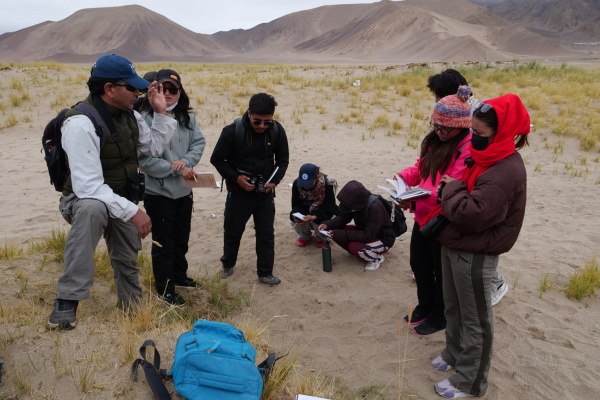
When we did our Indus River walk, people told us that in the past they used to drink straight from the Indus, but now that is not possible—it is so polluted. And even people from Leh, for instance, used to carry Indus water in jerry cans. Despite they getting water from the stream originating near Khardung La, they used to come to the Indus to fetch drinking water, because they considered the Indus River water to have some therapeutic value.
If you look at the usage of the Indus now, of course it has a lot of recreational value. A lot of people go for picnic and camping next to the river. I’m talking about the locals. But other than that, military has a big presence along the Indus also. And a lot of tourist camps are there along the Indus. And then laborers—more recently with all the developmental activities coming into Ladakh, you know, a lot of labor camps are coming up along the Indus. And so all these people, they throw everything in the river from kitchen waste to plastic garbage. There’s very little awareness amongst people. A lot of people throw food in the Indus thinking that they’re doing a good job, you know, feeding the fish! But they don’t know that it leads to eutrophication. Algal blooms are occurring in certain places, and in tandem with the rising temperature, it basically leads to depletion of dissolved oxygen in the water, you know. Cold water holds greater amount of dissolved oxygen. And so, all of these are probably making the Indus water less healthy even for the crops, let alone animals—domestic and wild animals.
In the wintertime, ice hockey is now coming up in a big way, and for that people rely a lot on the Indus. Ponds near the Indus for instance are being used for ice skating. And further east, where we went last time during the Indus River walk, pastoralists are entirely dependent on the Indus for drinking water for their animals. Most of the major pastures in eastern Ladakh are basically riverine pastures. All those riverine meadows are there because of the Indus. If the Indus dries up, then there won’t be any pashmina goat, that would severely hit the pashmina industry, which is such an important source of income for a lot of people here. Ladakh was invaded by the Dogras mostly for the pashmina, actually. Had it not been for the pashmina, Ladakh would have been an independent kingdom today, most probably.
MD: Are there any data on various water usage or dependence on Indus for Ladakh?
TN: I don’t think there are any, especially in relation to the river. But we can find out the number of farmers that are in these villages; all of them are, of course, dependent on the Indus, as there’s no other water source. But I don’t think there is any dataset that talks about the number of people relying on the Indus as such.
PD: It will be good to get some data on the drinking water dependence, irrigation dependence on Indus. Possibly we can also get it from the irrigation department or water supply department of J&K and Ladakh Union Territory. And the second thing is what you said about pollution—it will be interesting to see if there are any recent pollution tests, you know, water tests of Indus river quality in Leh–Ladakh, if there is a trend, if there are any sewage treatment plants, if there is any solid waste management—because these are so important to the health of the river and for the health of the people there.
TN: There’s this statistical department and every year they publish data on various aspects of the district.
The other thing you talked about is the sewage treatment plant. That is something that the District Administration and Housing and Urban Development Department, UT, Ladakh have been working on for many years. Until now, there’s no foolproof system that they have come up with. And I heard—and that’s really bad if that has been happening—that they were just letting all the sewage water overflow into the Indus.
MD: Is there a pollution control board that monitors river water quality?
TN: Yes, yes. There is a Pollution Control Committee. And I think the NGT had actually asked the Pollution Control Committee to reply—the thing that I told you about NGT taking suo moto cognizance of encroachments of bird habitats. And so let’s see what comes out of all of this.
PD: Just, you know, in connection to what we saw in Chenab and also in some parts of Jhelum—was there any change in dependence on the river. For example, in Himachal Pradesh, they did not use the river water for irrigation at all. They always used to use the glacial springs and the kuhls and the meltwater for irrigation. But now that the meltwater is decreasing and the groundwater is decreasing, they are now lifting water from the river. So the entire scenario—the canvas of irrigation is changing in response to climate change or in response to, you know, changing weather patterns, whatever. Do you see any changing—do you see any change from a sustainable practice to an unsustainable practice, maybe by the pastoralists or the farmers here?
TN: So, what I said earlier, Parineeta, is that downstream from here, where the villages are higher than the Indus, they are lifting water out from the Indus for irrigation, but not for drinking. It is not happening at a very large scale though, because the western part of Ladakh, people are actually slowly moving away from agriculture because tourism and a lot of other activities are kind of more lucrative. And so, slowly, the agriculture is not given that much attention to. But yeah, as I said, that in several villages, people are lifting water from the Indus.
MD: Can you speak a little about, if you know, issues related to changes in the weather pattern, climate change in the region? Is there data on it?
TN: Climate change. Yeah. So we did not have enough data until recently. Now Ladakh has 30 years of data on weather pattern and climate. The data show that the temperature has been increasing steadily. And local people concur. In the remote villages of Ladakh the glaciers are receding. Wherever you go in the remote parts of Ladakh people tell you that in the past they used to have a lot of snowfall, which has decreased over the years. But there’s a lot of rain in the summer, often leading to floods, and the weather is very unpredictable. And sometimes there are drought conditions. Glacial Lake Outburst Floods (GLOF) is something that we hear a lot these days. And several villages have already experienced that in the last several years. And the glacial lakes are forming—not just here in Ladakh, but across the Himalayas—with rapid melting of glaciers, lakes are forming at the bases of the glaciers, and those are pretty dangerous. In the past, all the pastoral people who kept livestock would go to these higher reaches, herding and grazing their animals in the summer. But since people have gotten rid of their livestock and animals in many parts of Ladakh, they remain unaware of these lakes.
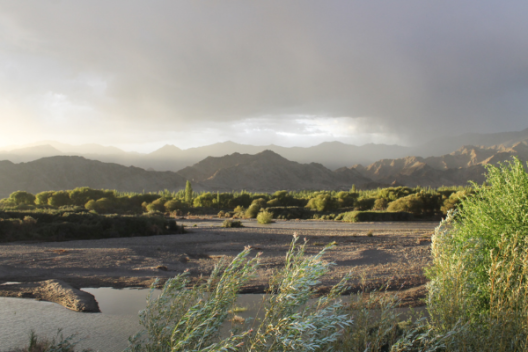
As far as the water level in the Indus is concerned, as I told you that a lot of people are now reclaiming the riverbeds that they had lost in the past to floods. And now, since the water level has gone down, exposing the riverbed, people are just kind of reclaiming those areas, which I think is bad for waterbirds. We have some very unique species along the Indus, including the Ibisbill, which occurs just in the Himalayan region—it’s a very important species. A lot of tourists come just to see this bird. Since their habitats are along the riverbed, they are being affected the most. The water level in Indus has been going down, as mentioned earlier. When we, for instance, came here in 2010—there was a flood, and —water had overflown to some agricultural fields, but we hardly see that kind of water today. Very little water in the Indus and in some places people can cross the Indus without any aid.
MD: Do you know more about the weather-climate study that you just mentioned?
TN: You need to have weather data, and there are only a few weather stations in Ladakh. One is located at the Leh Airport, then there is this other one at the Field Research Laboratory (FRL), a military establishment to grow vegetables for the military personnel here. They have a weather station, and then there is one at the airfield in the Nubra Valley. And then there’s this Indian Astrophysics Observatory in the Hanle Valley, which has a weather station. So these are the only few weather stations where they have been recording temperature and precipitation over the last 30 years. We did not have enough data until very recently to say anything definitively about climate change, but now we do.
PD: So we just want to ask you a concluding question. As a wildlife biologist and someone who is also a resident of Ladakh and this river basin: what do you think should be the way forward?
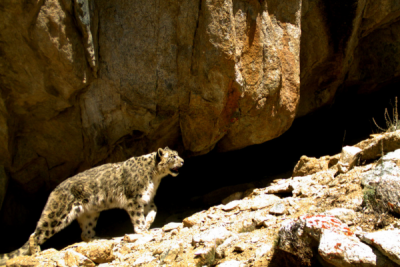
TN: So I think the way forward is, of course, it’s very important to raise awareness among people. Because right now people don’t seem to understand all these connections.
And so that’s what the Indus River Walk is all about. And I think I was telling you earlier that with the drying up of springs in the interior parts of Ladakh—be it because of the melting glaciers or permafrost— many wild animals are getting attracted to the Indus. In fact, you had also asked me about my most memorable moment in relation to Indus. I remember very vividly that a mother snow leopard and her two cubs had come down to the Indus to drink water. We were driving in the night and suddenly we saw this mother and her cubs crossing the road; these fluffy cubs—they were so beautiful. There was a retaining wall on the side of the road and the mother just climbed over that. The cubs also tried to climb over to follow their mother, but they couldn’t do it because it was quite high, so they had to walk over quite a distance and take a detour and then join their mother. It was the most beautiful thing, you know. Obviously, these animals had come down to the Indus to drink water. You can imagine if there is heavy traffic on these roads, there might be accidents also. In any case, more and more animals are coming down to the Indus to drink. And with the developmental activities, for instance, people are taking control over the land and putting fences, that obstructs the way for these animals to the Indus.
Another thing is that during the Indus river walk, we stopped at places such as Chushot where some people also fish in the Indus. And we had a lot of interactions with them. We also heard in other villages that people divert water from the mountain streams to irrigate their fields. Sometimes they just put a cemented structure or weir with no fish ladder, and it obstructs snow trouts from migrating upstream to spawn. When we asked them, “Do you know that such activities affect fish migration?”—they simply did not know about fish migration, and that these fish go upstream for spawning in the higher and colder water. And so these are just lack of awareness and understanding. So it’s really important to let people know about all of these connectivities, right?
In sum, the Indus River Walk is an effort to first understand the traditional practices of the people, and also to tell them about some of the ecological implications of unsustainable practices. And this year in March, the Snow Leopard Conservancy India Trust is organizing the World Glaciers Day with the University of Ladakh and The Ohio State University. It is also an effort of raising awareness, because the cryosphere and hydrosphere are important for wildlife, domestic animals, and people of Ladakh. But cryosphere especially becomes so important for places like Ladakh where every living being is dependent on the glaciers and snowpacks, be it wild animals or farmers. Without glaciers there simply won’t be any life here. So yes, going forward – first raising awareness and engaging people, especially the youth, in preserving the local ecology is important. If you were to have a bright future for wildlife, river and people of Ladakh, then I think it’s high time that the youth understood the importance of all of these.

